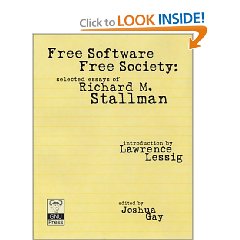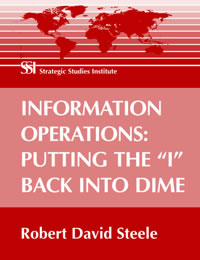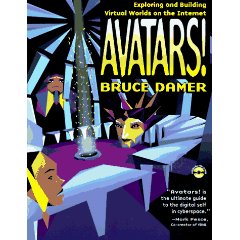
![]() First Rate Executive Level Overview
First Rate Executive Level Overview
September 18, 2007
United Nations
First off, this book is available for under $20 in hard-cover at the UN Bookstore and other selected online outlets. For some reason the UN does not offer it directly, so a third party makes it possible to order with one click at an added cost that was acceptable to me.
This is a really important and helpful book for those of us that have been thinking about “Information Peacekeeping” (using information to deter and reduce conflict) and “Information Arbitrage” (converting information into intelligence and intelligence into wealth). Nine authors and the editor each contribute extremely well-written, well-structured chapters.
Highlights that I noted for inclusion in my new book, WAR AND PEACE in the Digital Era: Multinational Information Sharing & Decision Support:
ICT (Information and Communications Technologies) has created a new era. Jeff Bezos told the TED conference that we are at the very beginning of innovation in ICT, and I agree. In the Overview of this book we learn:
1) Transnational movements of information and financial capital are a dominant force in the global economy;
2) Worldwide financial exchanges outweigh trade in goods by 60 to 1;
3) ICT services are estimated to be 65% of the total gross national product of the world;
4) Informatics capacity doubles every 18 to 24 while communications capacity doubles every six months (this is one reason the Earth Intelligence Network emphasizes the need for 100 million volunteers to teach the five billion poor “one cell call at a time”);
5) Information that could have been transferred through fiber optics in one month in 1997 can now be transferred in just one second in 2007.
I would add to point five above that I am starting to see massive leaps in processing and machine-speed analysis, to the point that even ugly x-rays can be processed to a point ten times better than previously available to the human eye. This is going to change everything, including security, as a “smart network” helps isolate the anomalous for closer scrutiny.
The chapter on entrepreneurial perspective tells us that education is vital to spawning innovation and entrepreneurial activity, and cited Robert Sternberg (1998) in identifying Analytical Intelligence, Creative Intelligence, and Practical Intelligence as the “three abilities.”
To this I would add the observation that the five billion poor have neither the time nor the luxury of spending 18 years in an archaic educational system that is part child-care and part-prison. See must move quickly to make free education in 183 languages available to anyone with access to a cell phone, and we must redirect ALL of our discarded cell phones and computers, as the book suggests, to the less fortunate.
The sooner we connect the poor, the sooner they can create infinite wealth, and this has the salutary benefit of assuring the rich that their existing wealth is safe from confiscation.
Although I was aware of the World Information Summits, this book provides something I did not have before, a very convenient overview of the efforts by various parties to address the “Governance Deficit” through collaboration. I read the Brahimi Report; I admire what MajGen Patrick Cammaert did with the Joint Military Analysis Centers (JMAC), and believe that the UN System–as well as all Member Nations, are now ready for the next big leap forward, what I call the United Nations Open-Source Decision-Support Information Network (UNODIN).
For those that may not be aware, the UN has asked the Nordic countries to expand on the very successful Peacekeeping Intelligence course developed by Sweden in the aftermath of our peacekeeping intelligence conference there in 2004. At the same time, non-profit organizations are developing inexpensive reference materials to help anyone make the most of open sources of information and open software tools, including TOOZL, which fits on a flash drive.
The book concludes with case studies, among which I found the India case study most compelling. India now provides the bulk of the better call centers, and India-based “Homework Help” costs just $18 an hour. Imagine if we had 100 million volunteers, each fluent in one of 183 languages, and able to take calls from anywhere in the world, and use their Internet access to answer a question or teach “one call at a time.” C.K. Prahalad's book persuaded me that there is no higher calling in life than to help connect the poor to knowledge. This book is a superb beginning for anyone wishing to join this mission.
Other books I recommend:
Edutopia: Success Stories for Learning in the Digital Age
Promoting Peace with Information: Transparency as a Tool of Security Regimes
Peacekeeping and Public Information: Caught in the Crossfire (Cass Series on Peacekeeping, 5)
Peacekeeping Intelligence: Emerging Concepts for the Future
The Wealth of Networks: How Social Production Transforms Markets and Freedom
Revolutionary Wealth: How it will be created and how it will change our lives
The Fortune at the Bottom of the Pyramid: Eradicating Poverty Through Profits (Wharton School Publishing Paperbacks)
The New Craft of Intelligence: Personal, Public, & Political–Citizen's Action Handbook for Fighting Terrorism, Genocide, Disease, Toxic Bombs, & Corruption
Information Operations: All Information, All Languages, All the Time











